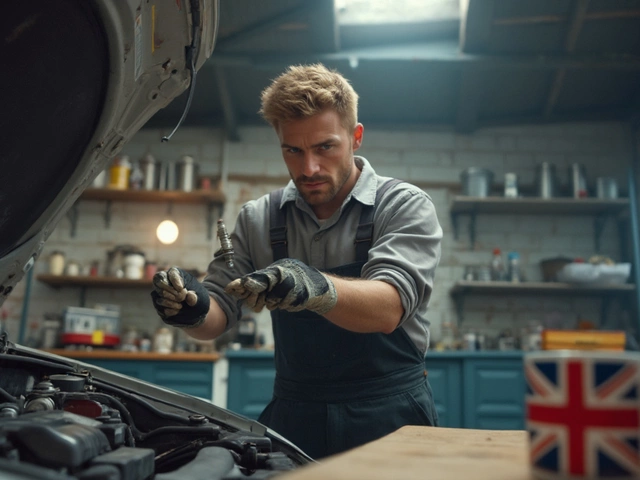Bad Shocks: Spot the Signs, Understand the Risks, and Get the Right Fix
If your ride feels bouncy, sways a lot, or makes rattling noises over bumps, you’re probably dealing with bad shocks. They’re the little dampers that keep your car glued to the road, and when they fail, everyday driving can turn into a rough ride.
Bad shocks don’t just make you uncomfortable – they affect braking distance, tire wear, and overall stability. Ignoring the problem can lead to costly repairs later, so it’s worth checking them early.
How to Know Your Shocks Are Bad
First sign: a noticeable bounce after you hit a pothole. If the car keeps bouncing for more than a second, the shocks have lost their ability to dampen movement.
Second sign: uneven tire wear. When shocks can’t control the wheel’s motion, the tires wear out unevenly, especially on the inner or outer edges.
Third sign: clunking or rattling noises from the suspension, especially when turning or going over rough surfaces. That’s the metal parts inside the shock knocking around.
Last sign: the car leans excessively during cornering. A healthy suspension keeps the body level; if it tips a lot, the shocks are likely worn out.
Fixing Bad Shocks: Repair or Replace?
Most of the time, you’ll need to replace the shocks rather than repair them. They’re sealed units, and once the internal fluid leaks or the piston wears, there’s no easy fix.
If the car is older and the other suspension parts are also worn, it’s smart to replace the entire suspension kit – springs, mounts, and bushings – for a balanced setup.
For a single bad shock, swapping it out is straightforward. A typical replacement takes about an hour per wheel, and many garages can fit two or four at once to keep costs down.
Prices vary: a standard shock absorber might run $50‑$120, while performance or premium units can cost $150‑$250 each. Add labor, and you’re looking at $200‑$400 for a full front or rear set.
Before you buy, check the vehicle’s manual for the correct shock type – monotube, twin‑tube, or gas‑charged – and match the dimensions exactly.
After installation, take a short test drive. You should feel less bounce, more stable cornering, and quieter ride. If the problem persists, it could be a related component like a worn strut mount or broken spring.
Regular maintenance helps avoid bad shocks. Keep an eye on the suspension for leaks, inspect bushings for cracks, and replace worn parts promptly. A quick visual check before a long trip can save you a breakdown on the road.
In short, don’t let bad shocks ruin your drive. Spot the symptoms early, get a reliable replacement, and enjoy a smoother, safer ride.
 16 July 2025
16 July 2025
How to Spot Bad Suspension Shocks: Warning Signs and Solutions for Your Car
Learn how to tell if your car’s suspension shocks are bad, spot the warning signs, and get expert tips to keep your ride safe and comfortable.
 15 June 2025
15 June 2025
Car Suspension Problems: What Really Wrecks Your Ride?
Ever wondered why your car starts bouncing awkwardly or makes mysterious clunks over bumps? This article dives into what causes car suspension to go bad, from rough roads to sneaky rust. Learn how habits, environment, and overlooked fixes quietly kill your suspension and pick up tips that’ll help keep your ride smooth—and your wallet happier.
 8 March 2025
8 March 2025
Driving with Bad Shocks: How Far Can You Go?
Driving with bad shocks is a gamble that most of us don't want to take. While you might think you can push your luck, compromised shocks can lead to a bumpy ride and even affect your car's safety. Learn how long you can really drive with bad shocks and the potential risks involved. Understand the signs of shock failure and why timely replacement is crucial for a smooth, safe journey. Discover practical tips for extending the life of your shocks, so you can keep cruising with confidence.
 16 December 2024
16 December 2024
Identifying Bad Shock Absorber Noises in Your Vehicle
Discover the tell-tale sounds that indicate problems with your car's shock absorbers. Learn about the root cause of these noises, how they affect vehicle performance, and the steps you can take for maintenance and repair. Find tips on diagnosing suspension issues and why addressing them promptly is crucial for your safety. Ideal for drivers who want to ensure a smooth and safe ride.
Latest Posts
-

Choosing the Right Exhaust Size for 300 HP
-

How to Tell If a Spark Plug Is Good: Symptoms, Testing, and Expert Tips
-

How to Test a Bad Fuel Pump: Signs, DIY Diagnostics, and Fixes
-

Car Radiator Costs Explained: How Pricey Are Replacements in 2025?
-

When to Avoid Full Synthetic Oil: Risks, Myths, and Real-World Scenarios

0